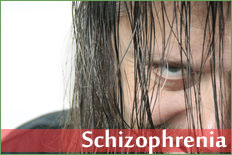Health Centers > Mental Health Center > Mental Disorders > Schizophrenia and Other Psychotic Disorders > Shared Psychotic Disorder (Folie a Deux)
Shared Psychotic Disorder (Folie a Deux)
Diagnostic Features
The essential feature of Shared Psychotic Disorder (Folie a Deux) is a delusion that develops in an individual who is involved in a close relationship with another person (sometimes termed the "inducer" or "the primary case") who already has a Psychotic Disorder with prominent delusions (Criterion A). The individual comes to share the delusional beliefs of the primary case in whole or in part (Criterion B). The delusion is not better accounted for by another Psychotic Disorder (e.g., Schizophrenia) or a Mood Disorder With Psychotic Features and is not due to the direct physiological effects of a substance (e.g., amphetamine) or a general medical condition (e.g., brain tumor) (Criterion C). Schizophrenia is probably the most common diagnosis of the primary case, although other diagnoses may include Delusional Disorder or Mood Disorder With Psychotic Features.
Shared Psychotic Disorder (Folie a Deux)
The content of the shared delusional beliefs may be dependent on the diagnosis of the primary case and can include relatively bizarre delusions (e.g., that radiation is being transmitted into an apartment from a hostile foreign power, causing indigestion and diarrhea), mood-congruent delusions (e.g., that the primary case will soon receive a film contract for $2 million, allowing the family to purchase a much larger home with a swimming pool), or the nonbizarre delusions that are characteristic of Delusional Disorder (e.g., the FBI is tapping the family telephone and trailing family members when they go out). Usually the primary case in Shared Psychotic Disorder is dominant in the relationship and gradually imposes the delusional system on the more passive and initially healthy second person. Individuals who come to share delusional beliefs are often related by blood or marriage and have lived together for a long time, sometimes in relative social isolation. If the relationship with the primary case is interrupted, the delusional beliefs of the other individual usually diminish or disappear. Although most commonly seen in relationships of only two people, Shared Psychotic Disorder can occur among a larger number of individuals, especially in family situations in which the parent is the primary case and the children, sometimes to varying degrees, adopt the parent's delusional beliefs. Individuals with this disorder rarely seek treatment and usually are brought to clinical attention when the primary case receives treatment.
Associated Features and Disorders
Aside from the delusional beliefs, behavior is usually not otherwise odd or unusual in Shared Psychotic Disorder. Impairment is often less severe in the individual with Shared Psychotic Disorder than in the primary case.
Prevalence
Little systematic information about the prevalence of Shared Psychotic Disorder is available. This disorder is rare in clinical settings, although it has been argued that some cases go unrecognized. Limited evidence suggests that Shared Psychotic Disorder is somewhat more common in women than in men.
How Common Is Shared Psychotic Disorder?
The number of cases is unknown, but shared psychotic disorder is rarely seen in clinical settings, such as hospitals, outpatient clinics, or doctors' offices. In many cases, only one of the affected individuals seeks treatment, making a diagnosis of shared psychotic disorder difficult. As a result, many cases might go undetected.
Schizophrenia
A common and serious mental disorder characterized by loss of contact with reality (psychosis), hallucinations (false perceptions), delusions (false beliefs), abnormal thinking
Psychotic Disorders
Psychotic disorders are a collection of disorders in which psychosis ...
Mood disorders
Mood disorders are among the most common diagnoses in psychiatry ...
Personality Disorders
The majority of people with a personality disorder never come ...
Disorders of Childhood and Adolescence
Many disorders seen in adults can occur in children.
Substance-Related Disorders
Substance abuse is as common as it is costly to society...
Cognitive Disorders
The cognitive disorders are delirium, dementia, and amnestic disorders ...
Miscellaneous Disorders
Miscellaneous disorders does not refer to any official...
Course
Little is known about the age at onset of Shared Psychotic Disorder, but it appears to be quite variable. Without intervention, the course is usually chronic, because this disorder most commonly occurs in relationships that are long-standing and resistant to change. With separation from the primary case, the individual's delusional beliefs disappear, sometimes quickly and sometimes quite slowly.
Differential Diagnosis
Schizophrenia and Other Psychotic Disorders
The diagnosis of Shared Psychotic Disorder is made only when the delusion is not due to the direct physiological effects of a substance or a general medical condition. Differential diagnosis is rarely a problem because the history of close association with the primary case and the similarity of delusions between the two individuals is unique to Shared Psychotic Disorder. In Schizophrenia, Delusional Disorder, Schizoaffective Disorder, and Mood Disorder With Psychotic Features, there is either no close relationship with a dominant person who has a Psychotic Disorder and shares similar delusional beliefs or, if there is such a person, the psychotic symptoms usually precede the onset of any shared delusions. In rare cases, an individual may present with what appears to be Shared Psychotic Disorder, but the delusions do not disappear when the individual is separated from the primary case. In such a situation, it is probably appropriate to consider another Psychotic Disorder diagnosis.
Many highly detailed explanations of folie - deux pathogenesis have been developed, yet none appear to explain all aspects of the syndrome. A survey of the literature shows that most of those afflicted with the disease are women with higher intelligence quotient scores who are usually younger than their significant other (eg, partner, parent, sibling, friend). The survey further suggests that the primary patients are susceptible to schizophrenia and often are diagnosed with episodes of paranoid delusions.
Quite often, factors arise because of unhealthy or interrupted ego development during the early stages of life. As Freud suggested with his theories on the Oedipus and Electra complexes, children develop attraction to the opposite-sex parent, developing a greater sense of self by comparing and resisting identification with their same-sex male or female parent, recognizing that each is similar to or different from themselves. If the relationship between parent and child is filled with jealousy, rejection, or anger, or if the relationship becomes more sexual than that of a healthy parent-child relationship, symptoms of folie - deux generally express themselves.
The adult-child identifies inappropriately with the opposite-sex parent and often perceives or has delusions of shared sexual intimacy with the parent. The person who has the disorder tends to form symbiotic relationships with a significant other who shares a common psychiatric disorder; often, they too are susceptible to unhealthy bonding, lowered self-esteem, and lack of personal responsibility that would otherwise foster healthy interdependence within intimate relations.
Studies of individual cases have shown that delusional ideas and psychotic symptoms are rarely transmitted to a healthy individual whose partner displays unhealthy behavior resulting from a psychotic disease; however, a passive person may have a genetic predisposition to psychosis and, as a result, may develop this disordexr.
Diagnostic criteria for 297.3 Shared Psychotic Disorder
A. A delusion develops in an individual in the context of a close relationship with another person(s), who has an already-established delusion.
B. The delusion is similar in content to that of the person who already has the established delusion.
C. The disturbance is not better accounted for by another Psychotic Disorder (e.g., Schizophrenia) or a Mood Disorder With Psychotic Features and is not due to the direct physiological effects of a substance (e.g., a drug of abuse, a medication) or a general medical condition.
Daily Mental News
Post-traumatic stress disorder seen in many adults living with congenital heart disease
A single-center study from The Children’s Hospital of Philadelphia (CHOP) found that as many as one in five adult patients…


